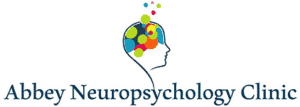Understanding individual learning needs involves identifying specific challenges and strengths in cognitive processing, memory retention, and comprehension. Observational assessments, cognitive testing, and educational evaluations are crucial. These methods help pinpoint areas where learners may struggle, such as information processing speed or auditory processing difficulties. Additionally, assessing emotional factors like anxiety or motivation can uncover barriers to learning. By comprehensively evaluating these aspects, educators can tailor interventions and teaching strategies to support each learner effectively, fostering a more inclusive and accommodating learning environment.
Understanding Individual Learning Styles
Exploring how each student best absorbs and processes information is crucial in educational settings. By identifying whether a student learns best through visual, auditory, kinesthetic, or other modalities, educators can tailor their teaching methods to match these preferences. For instance, visual learners might benefit from diagrams, charts, and graphic organizers, while auditory learners may thrive in discussions and lectures.
Visual Learners
Visual learners absorb information best through visual aids such as charts, graphs, diagrams, and written instructions. They rely on seeing information presented clearly and may benefit from color-coded notes or visual organizers to enhance comprehension and retention of material.
Auditory Learners
Auditory learners learn effectively through listening and verbal communication. They grasp concepts through lectures, discussions, and spoken explanations. They often benefit from participating in group discussions or using audio recordings to reinforce learning.
Kinesthetic Learners
Kinesthetic learners thrive on physical activity and hands-on experiences. They learn best when actively engaged in activities like experiments, simulations, and interactive projects. Movement and tactile experiences help them understand and remember concepts more effectively.
Reading/Writing Learners
These learners excel in absorbing information through reading and writing. They prefer written materials such as books, articles, and written instructions. They often take detailed notes and benefit from writing out concepts to reinforce understanding.
Multimodal Learners
Multimodal learners adapt their learning style depending on the situation. They may combine elements of visual, auditory, kinesthetic, and reading/writing approaches to understand and retain information effectively. They benefit from a variety of instructional methods that cater to different learning modalities, enhancing their overall learning experience and comprehension.
Identifying Cognitive Strengths and Challenges
Assessing cognitive strengths and challenges involves evaluating various aspects of mental processes that impact learning. This assessment includes memory capabilities, attention span, problem-solving skills, and critical thinking abilities. Recognizing cognitive strengths allows educators to capitalize on these areas, fostering confidence and competence in students.
Conversely, identifying challenges such as difficulties in sustained attention or memory retention enables targeted interventions to support improvement. By pinpointing specific cognitive areas, educators can implement strategies that enhance learning outcomes and overall academic success.
Observing Behavioral Patterns in Learning
Behavioral patterns provide valuable insights into how students approach learning tasks and interact within the educational environment. Observing behaviors such as motivation levels, task persistence, and reactions to challenges helps educators understand underlying factors influencing academic performance.
For example, a student who consistently displays high motivation and persistence may benefit from challenging assignments that promote independent problem-solving skills. Conversely, a student struggling with frustration tolerance might require additional support and encouragement to build resilience and maintain engagement. By closely monitoring behavioral patterns, educators can tailor instructional strategies and classroom management techniques to create a supportive and productive learning atmosphere.
Assessing Emotional Factors Impacting Learning
Emotional well-being plays a significant role in academic achievement and overall learning experiences. Assessing emotional factors such as anxiety levels, self-esteem, and social interactions provides critical insights into how these aspects impact a student’s ability to engage with educational material effectively.
For instance, a student experiencing high levels of anxiety may benefit from mindfulness techniques or structured support systems to alleviate stress and enhance focus during learning activities. Similarly, fostering positive self-esteem through affirmations and constructive feedback can empower students to take on academic challenges with confidence. By addressing emotional factors alongside academic needs, educators create a nurturing environment that supports holistic student development.
Using Diagnostic Tools for Comprehensive Evaluation
Employing diagnostic tools is essential for conducting thorough evaluations of students’ academic performance, cognitive processes, and emotional well-being. These tools include standardized assessments, educational tests, and structured interviews designed to gather comprehensive data. For example, standardized tests provide quantifiable data on academic strengths and areas needing improvement, guiding the development of targeted interventions.
Educational assessments may also include interviews with students, parents, and educators to gather qualitative insights into learning behaviors and social interactions. By combining quantitative and qualitative data, educators gain a holistic understanding of each student’s educational needs, enabling informed decision-making and personalized educational planning.
Collaborating with Parents and Educators
Collaboration between parents, teachers, and educational professionals is essential for supporting students’ diverse learning needs effectively. By engaging parents in the assessment process, educators gain valuable insights into students’ home environments, learning preferences, and developmental milestones. This collaboration fosters a cohesive approach to addressing academic challenges and implementing supportive interventions both at school and home.
Additionally, consulting with other educational professionals, such as counselors or specialists, allows for interdisciplinary insights and expertise that enrich the assessment and intervention process. Through open communication and shared goals, collaborative efforts ensure that students receive comprehensive support tailored to their individual strengths and challenges.
Tailoring Interventions to Support Learning Goals
Developing personalized interventions based on assessment results is crucial for meeting students’ specific learning goals and maximizing their educational potential. These interventions are tailored to address identified academic, cognitive, and emotional needs effectively. For instance, interventions may include differentiated instruction to accommodate diverse learning styles or targeted support programs to strengthen specific academic skills.
- Differentiated Instruction: Customize teaching methods to suit diverse learning styles and abilities, ensuring every student can engage effectively with the curriculum.
- Personalized Learning Plans: Create tailored plans outlining specific academic goals and interventions based on individual student assessments.
- Targeted Skill Development: Focus on specific skills with tailored exercises and strategies to enhance understanding and proficiency in challenging areas.
- Adaptive Technologies: Integrate technology that adjusts to students’ learning needs, providing personalized feedback and interactive learning experiences.
- Collaborative Support Systems: Coordinate efforts among teachers, parents, and support staff to implement consistent strategies that promote student success and growth.
Monitoring Progress and Adjusting Strategies
Continuously tracking student progress and adjusting teaching strategies is essential for optimizing learning outcomes. By systematically evaluating academic performance and learning behaviors, educators can identify areas of improvement and success. This ongoing assessment allows for timely interventions and adjustments to instructional methods, ensuring that students receive the support needed to achieve their learning objectives.
For example, if a student demonstrates significant improvement in math comprehension but struggles with written expression, educators may modify teaching approaches to emphasize writing skills while maintaining momentum in math instruction. Regular feedback loops with students and collaboration with colleagues further enhance the effectiveness of these adaptive strategies, promoting a dynamic and responsive learning environment.
Conclusion
In understanding the diverse learning needs of individuals, Abbey Neuro Psychology Clinic emphasizes a personalized approach to assessment and intervention. By identifying cognitive strengths, behavioral patterns, and emotional factors impacting learning, tailor strategies to support each client’s unique journey towards academic and personal growth. Through collaborative efforts with educators and families, aim to foster environments where every individual can thrive. For comprehensive assessments and personalized interventions, contact Abbey Neuro Psychology Clinic at 366 S. California Avenue, Suite 14 Palo Alto, CA 94306 or call 650-590-5743.






